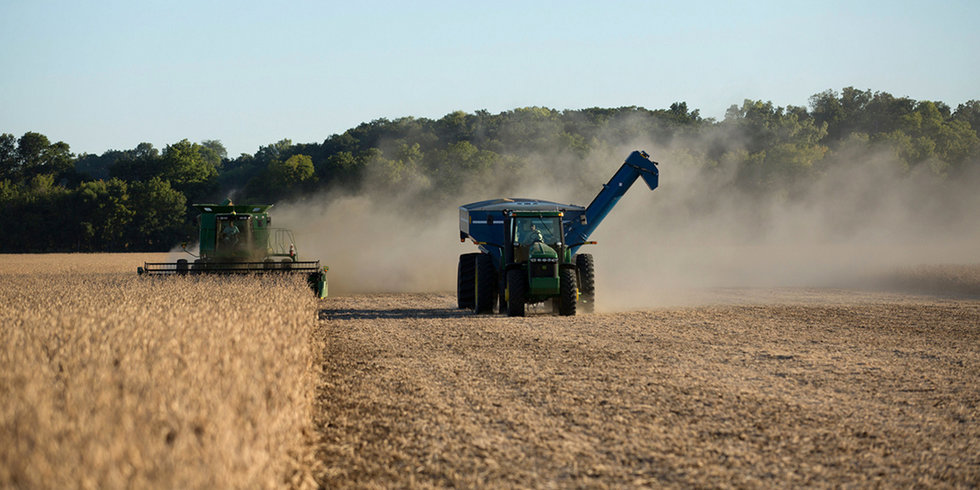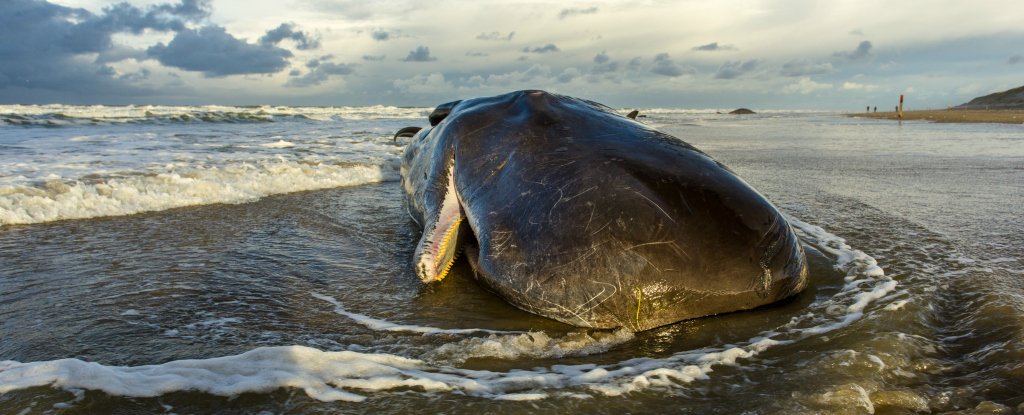May 1, 2018
I. Climate Change
The Decline of the Great Barrier Reef by Climate Change
Story by inside climate news, Apr. 19, 2018
The Great Barrier Reef spans 1,429 miles along the Queensland coast line and during the 2015-16 El Niño and again in 2017, it suffered marine heat waves that left about 30% of the reef severely damaged, possibly beyond recovery. While some of the reef system is bouncing back as water cools, successive waves of warm temperatures are making recovery more difficult.
The live coral organisms expel their symbiotic algae species that they need to live and are the source of the bright colors of reefs. It’s called “bleaching” and weakens the corals and makes them susceptible to disease. The result is the white, lifeless, shells of existence that once thrived. If the warming of sea water is prolonged, the damage becomes permanent.
need to live and are the source of the bright colors of reefs. It’s called “bleaching” and weakens the corals and makes them susceptible to disease. The result is the white, lifeless, shells of existence that once thrived. If the warming of sea water is prolonged, the damage becomes permanent.
 Coral reefs are habitat for a great many other species, making this all the more far-reaching. Reefs in Florida, Hawaii, and other Pacific Islands are suffering similar fates.
Coral reefs are habitat for a great many other species, making this all the more far-reaching. Reefs in Florida, Hawaii, and other Pacific Islands are suffering similar fates.
Youths Sue State of Florida
Story from Miami Herald, Apr. 16, 2018.
Eight young people, similar to the Oregon youths that filed their case (still pending) in 2015, have sued the state to force it to start working on a climate plan. The “I’m not a scientist” governor has steadfastly ignored the issues of rising seas in 20 Florida cities and the cutting of carbon emissions. He has allocated funds for the environment but not toward recognizing and planning for climate change.
Colorado Counties Sue Oil Companies Over Climate Change Damages
Story from inside climate news, Apr. 10, 2018.
The County and City of Boulder, and San Miguel County (Telluride ski area), sued Exxon and Suncor (Tar Sands Oil company) for costs incurred from its own brand of climate-related damages. This is in contrast to coastal areas suing oil companies. Colorado has experienced forest fires, lack of snow, extreme rainfalls, mosquito infestations, drought, and heat.
Exxon is accused of knowing as far back as the 1970s the dangers of promoting fossil fuels while hiding it from the public and even publishing its own version of why it’s not a problem. They’re also accused of promoting the dirty crude, Tar Sands Oil, with Suncor even after they knew the damage this could cause.
II. Fossil Fuels
Higher Offers Made to Keystone XL Landowners
Story from OilPrice.com, Apr. 20, 2018.
TransCanada is getting ready to start construction on the chosen alternative route of the KXL Pipeline through Nebraska but not all landowners are onboard. The newer route was approved by a Nebraska Public Service Commission (PSC) panel over the former “preferred” route due to disputes and environmental concerns. Now a lawsuit to nullify the newer route was filed by certain landowners in opposition to the PSC . As a result TransCanada is offering “incentive payments” to those landowners who sign on quickly.
 One might recall that:
One might recall that:
- The Keystone XL Pipeline was proposed as a recent expansion of the older Keystone Pipeline to pump Tar Sands Oil to a refinery in Steel City, NE before sending it to Port Arthur, TX for exporting.
- Obama blocked the KXL Pipeline in 2015.
- Trump, through the U.S. State Dept., approved the project in March, 2017.
- The NE PSC approved an alternative route (more easterly) in November, 2017.
- The lawsuit was filed soon thereafter in 2017.
III. Water and Food Reports
EU Provides “Beacon of Hope for Bees”
Story from The Guardian, Apr. 27, 2018.
 EU scientific risk assessors have decided the risk is too great and is banning the main neonicotinoid pesticides. This is great news coming from credible sources, and the broad agricultural use of these chemicals is set to end in six months.
EU scientific risk assessors have decided the risk is too great and is banning the main neonicotinoid pesticides. This is great news coming from credible sources, and the broad agricultural use of these chemicals is set to end in six months.
Neonicotinoids are the most widely used pesticides, applied to the ground and onto plant surfaces and taken into the plant tissues, including pollen and nectar. Another clever use of the pesticide is with treated seeds.
The names and manufacturers of the commonly used neonicotinoids are: imidacloprid (Bayer CropScience), thiamethoxam (Syngenta), clothinidin (Sumitomo Chemical & Bayer CropScience). Bees have genetic vulnerabilities to these chemicals and are affected neurologically leading to death. They are potent at low concentrations which for farmers is an advantage.
Interior Dept. Seeks to Raise Shasta Dam
Stories from San Francisco Chronicle, Apr. 15, 2018 and Aug. 28, 2015.
 The raising of Shasta Dam was one of the options to brace California’s water storage facilities and became law (Prop. 1) in 2014, sponsored by Sen. Diane Feinstein and Rep. Kevin McCarthy (R-Bakersfield). The measure was opposed by Sen. Barbara Boxer, Native Americans and environmentalists, and was declared illegal in California and finally put on the back burner by Pres. Obama. Today, the Trump administration is pushing to go forward with the 18-1/2 foot higher extension with congress appropriating $20. million for preliminary work to get started.
The raising of Shasta Dam was one of the options to brace California’s water storage facilities and became law (Prop. 1) in 2014, sponsored by Sen. Diane Feinstein and Rep. Kevin McCarthy (R-Bakersfield). The measure was opposed by Sen. Barbara Boxer, Native Americans and environmentalists, and was declared illegal in California and finally put on the back burner by Pres. Obama. Today, the Trump administration is pushing to go forward with the 18-1/2 foot higher extension with congress appropriating $20. million for preliminary work to get started.
The California Water Commission blocked Shasta as a viable project after the passage of Prop. 1 which listed several dam projects in the State for enhancing our water storage capacity. Congress maintains this is the cheapest way to help California and is ignoring the other options. The Westland Water District, with its large-scale nut growers, is the main district pushing the raising of Shasta Dam that would supposedly yield 77,800 acre-feet of additional water in dry years and possibly over several hundred thousand acre-feet in wet years. More reasonable increased delivery estimates come to about 51,000 acre-feet on average.
Opponents opine:
- The State declared that raising the dam would extend three miles into the McCloud River, a protected wild and scenic river, and also impact the Pit River that terminates in that area. The project would conflict with State law.
- Environmentalists believe the numerous impacts are too great even for the salmon that might benefit from increased flows in dry years.
- The Winnemem Wintu, a non-federally recognized tribe, have already been devastated by the flooding of their ancestral land and would be further impacted by increased flooding of their sacred sites, and also by the impact of the backup into their McCloud River areas.
- It would require relocating utilities, local businesses, roads and bridges, including a portion of Interstate 5.
Trump’s Tariffs Put U.S. GMO Soybean Exports at Risk
Stories by South China Morning Post, Apr. 5, 2018.
 Trump’s Tariff scheme will have negative effects on several areas of the U.S. economy, with farmers that grow soybeans taking a major hit. It’s the highest valued ($14 billion annually) product exported to China. Soybean prices have dropped by 5.3% already and exports to China could go down by as much as 70%.
Trump’s Tariff scheme will have negative effects on several areas of the U.S. economy, with farmers that grow soybeans taking a major hit. It’s the highest valued ($14 billion annually) product exported to China. Soybean prices have dropped by 5.3% already and exports to China could go down by as much as 70%.
- China will most likely shift away from the cheaper U.S. GMO soybeans to a home-grown product and expand its markets to other sources like Brazil, Argentina and possibly European countries.
- Soybeans are important for China’s meat production as feed for pigs, chickens and cattle.
IV. Politics
Scott Pruitt Makes Major Revision to Clean Water Act
Story from inside climate news, Apr. 4, 2018.
EPA Administrator Scott Pruitt sent a letter to the regional administrators rescinding the decision-making rule that allowed those local administrators to determine “Waters of the U.S.” in their regions, and will retain for himself alone to make the “geographic jurisdiction” decisions. It would take Clean Water Act provisions away from those waterways like wetlands, streams and some rivers and allow polluting and dumping in those waterways that were previously protected.
While this is an area that caused confusion to agricultural and other corporate interests in the past, it will now be much easier for corporations and farmers to use waterways in their areas in a way that could have far reaching environmental consequences.
V. Miscellaneous Items
Flint Mother Wins Goldman Environmental Prize
Story from mother nature network, Apr. 27, 2018.
 LeeAnne Walters, a mother in Flint, Michigan, began to experience health problems along with her children. Her journey led her to have her water and children tested exposing alarming levels of lead in their drinking water. It took her to the city leaders and eventually led to the exposure of a national problem.
LeeAnne Walters, a mother in Flint, Michigan, began to experience health problems along with her children. Her journey led her to have her water and children tested exposing alarming levels of lead in their drinking water. It took her to the city leaders and eventually led to the exposure of a national problem.
Young Dutch Inventor Founds Ocean Plastic Cleanup Company
Story from mother nature network, Aor. 25, 2018; EcoWatch, Apr. 23, 2018; and The Ocean Cleanup website.
 As first reported here in this Environmental Report in 2016, Boyan Slat from Holland invented a system to clean up the ocean gyres of plastic. His company, The Ocean Cleanup, has been testing the device in the North Sea and has now brought it to California. This will allow moving the gear to the northern Pacific area for the more challenging task of cleaning up a gyre there loaded with plastic.
As first reported here in this Environmental Report in 2016, Boyan Slat from Holland invented a system to clean up the ocean gyres of plastic. His company, The Ocean Cleanup, has been testing the device in the North Sea and has now brought it to California. This will allow moving the gear to the northern Pacific area for the more challenging task of cleaning up a gyre there loaded with plastic.
 Mr. Slat founded his company at 18 years of age and is the youngest recipient of the UN’s environmental award. A scuba diver himself, he came up with the idea for a barrier system designed to collect and remove trash without disrupting marine life. It uses non-permeable screens and curved floating booms, utilizing the ocean’s natural flow to funnel trash toward a central tank that is emptied periodically.
Mr. Slat founded his company at 18 years of age and is the youngest recipient of the UN’s environmental award. A scuba diver himself, he came up with the idea for a barrier system designed to collect and remove trash without disrupting marine life. It uses non-permeable screens and curved floating booms, utilizing the ocean’s natural flow to funnel trash toward a central tank that is emptied periodically.
It’s hoped the project will finance itself by recycling the plastic to make new products. That part is still murky at best but the effort is tremendous. Here’s a link to a YouTube video of Mr. Slat explaining the plastic problem and his project.
Update: TetraTech Fraud at Hunters Point Shipyard
Story from San Francisco Chronicle, Apr. 24, 2018 and San Francisco Business Times, Apr. 25, 2018.
/cdn.vox-cdn.com/uploads/chorus_asset/file/10623675/Screen_Shot_2018_04_10_at_8.56.20_AM.png) The fraudulent TetraTech cleanup data for San Francisco’s largest redevelopment project seems to be even worse than first thought. The company had admitted to falsifying some of its data but the EPA has weighed in, declaring about 97% of the data is unreliable.
The fraudulent TetraTech cleanup data for San Francisco’s largest redevelopment project seems to be even worse than first thought. The company had admitted to falsifying some of its data but the EPA has weighed in, declaring about 97% of the data is unreliable.
- Bradley Angel from Green Action is steadfastly holding TetraTech’s spokespersons accountable and is making this deception public.
- At least one Contra Costa supervisor is calling for an investigation of illegal trucking of radioactive soil to the county’s Keller Canyon Landfill by TetraTech.
- The SF Board of Supervisors will be holding a hearing on May 14.
Sperm Whale Died with 64 Pounds of Plastic in its Stomach
Story from EcoWatch, Apr. 10, 2018.
 This is a sad story of a whale washed up on a seashore in southern Spain – a juvenile, only 33 feet long. It includes a revealing video of the amazing number of plastic items found in its stomach and prompting new awareness in the amount of plastic clouding our oceans.
This is a sad story of a whale washed up on a seashore in southern Spain – a juvenile, only 33 feet long. It includes a revealing video of the amazing number of plastic items found in its stomach and prompting new awareness in the amount of plastic clouding our oceans.
California Under Attack by Trump Administration
Story by Los Angeles Times, Apr. 2, 2018.
There are two parts to this story:
1.) California’s agreement to set its own standards with fuel economy rules has been sacrosanct but now the federal administration is working expeditiously to destroy that agreement.
- The EPA under Scott Pruitt wants to set a national standard policy for all states and revoke California’s stricter standards, which are key to global warming mitigation efforts. Gov. Brown is quoted as saying this is a “belated April Fools’ Day trick.”
2.) The Justice Dept. is suing the state to block its law limiting the federal government’s ability to sell any federal land controlled by California (46 million acres).
- The administration is asking the court to overturn California’s law, as it violates the constitutional supremacy clause “that gives Congress the right to dispose of federal property.”
VI. Events
Saturday, Mar 5, 11:00 – 2:30pm, Berkeley Repair Cafe
- An informal gathering focusing on repairing things.
- 1924 Cedar St., Berkeley.
Sunday, Mar 6, 10:00am – 1:00pm, EcoHouse Tour May 2018
- Tour of Ecology Center’s EcoHouse.
- 1305 Hopkins St., Berkeley.
Wednesday, May 9, 7:00 – 8:30pm, Community Microgrids: Building Resilience and Sustainability
- Presentations by Local Clean Energy Alliance explaining microgrids.
- Movement Strategy Center, 436 14th, 5th Flr, Oakland (near 12th St. BART).
Thursday, May 10, 6:30-9:00pm, Future of Food with Paul Hawken
- The next installment coming from the Project Drawdown about agriculture and climate change. $20. advance/$23. at the door.
- David Brower Center, 2150 Allston Way, Berkely.
Friday, May 11, 7:00 – 9:00pm, Green Friday
- Discussion on environmental issues. (Refreshments served, $3.00 donation).
- 2530 San Pablo Blvd., Berkeley.
Friday, May 11, 7:00pm, “Bees, Zombees, and Citizen Science” by John Hafernike
- All about the bees.
- 2530 San Pablo Ave., Berkeley.
Monday, May 14, 7:00 – 9:00pm, Real Climate Leadership Panel
- On how California can be the model in transitioning to renewable energy.
- Scottish Rite Center, 1547 Lakeshore Dr.,Oakland (near Lake Merritt BART)
Saturday, May 19, 1:00 – 3:00pm, Masked Rally for Climate Justice
- Making the N95 Particulate Respirator Mask a symbol.
- Japantown Peace Plaza, 1610 Geary Blvd., San Francisco.
Other Sources of Events:
350Bay Area – Includes other 350.org branches in the Bay Area.
Planet Drum – San Francisco bioregion awareness center
David Brower Center – The environmental center in Berkeley
Ecology Center – Berkeley sustainability center
Sunflower Alliance – Bay Area umbrella organization for activism
Sierra Club San Francisco – Bay Area Website

The End
